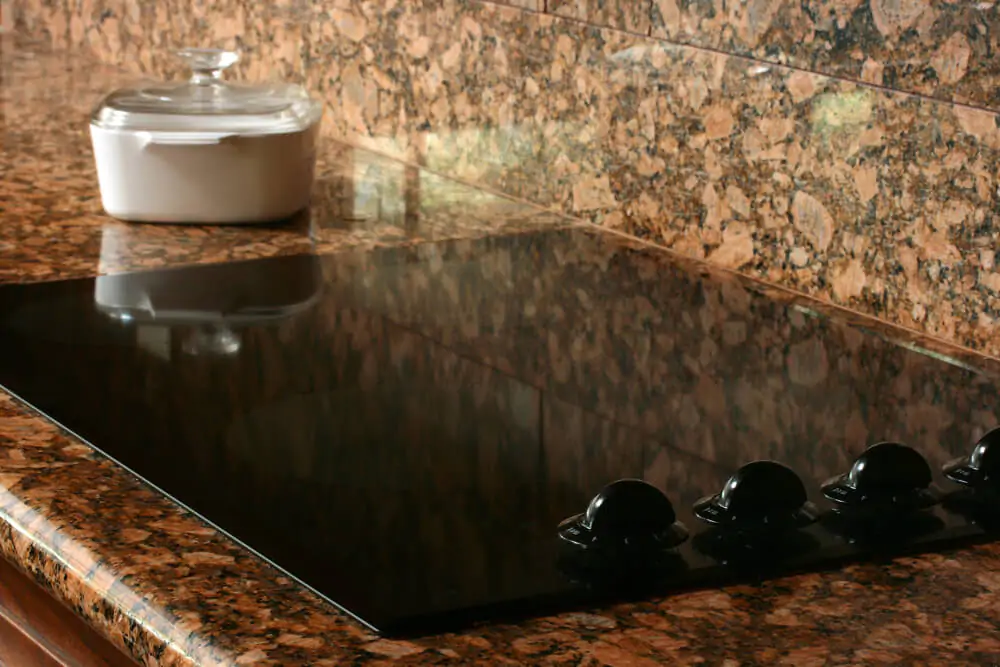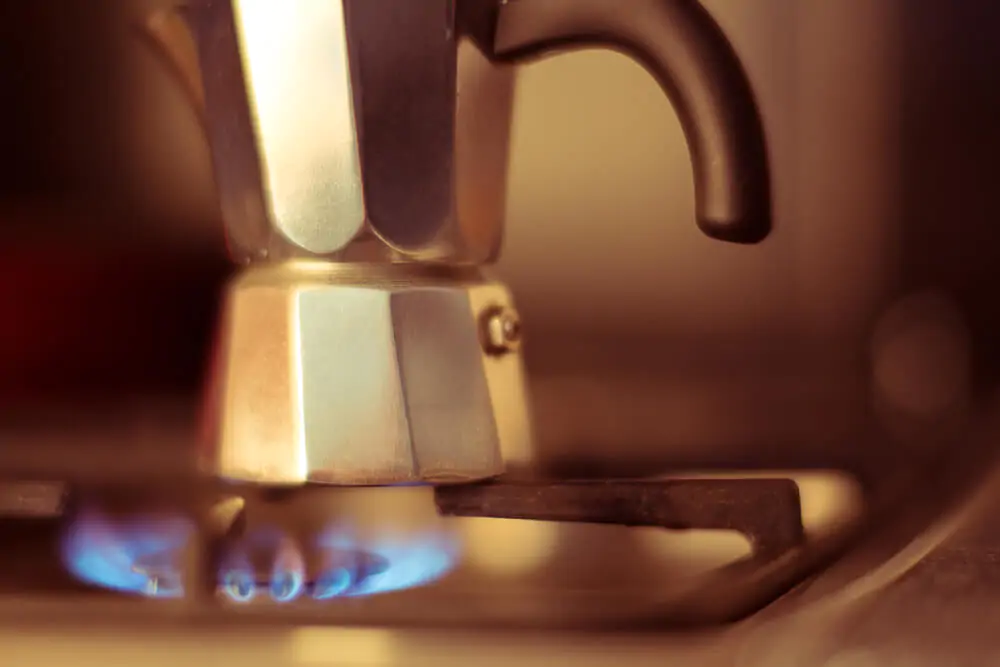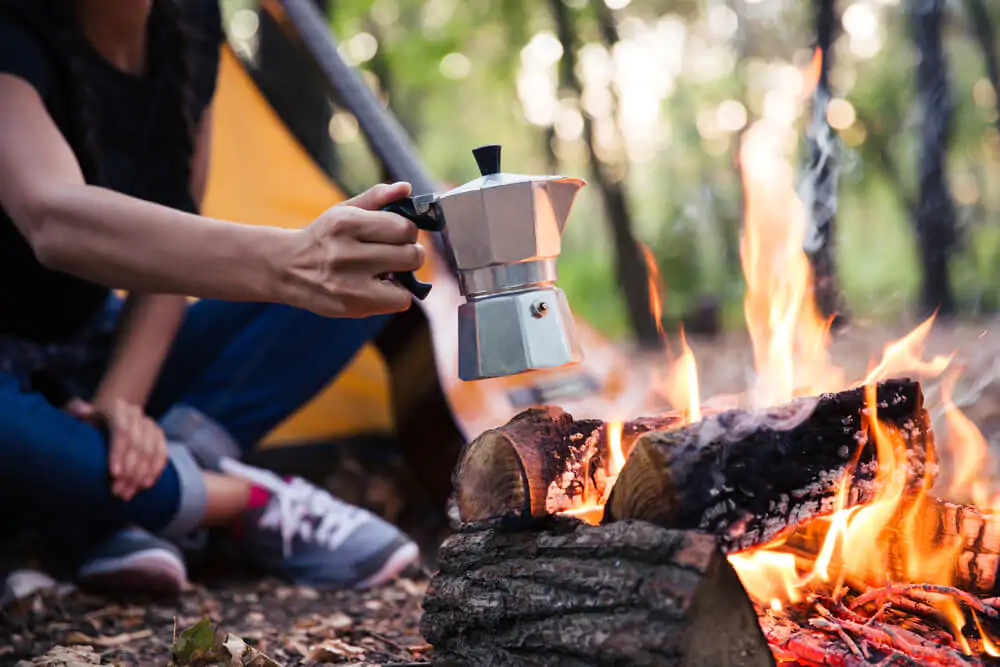Can you use a Moka Pot on a glass top stove? We put that to the test.

Whether you’re a newbie or a coffee magician, you’ve surely heard of the Moka pot. It has become a popular choice in the coffee enthusiasts’ inventory and is known for producing a rich and flavorful espresso. Given that they work best on a gas stove, you might be wondering whether they are even compatible with a glass top stove?
The answer is yes. You can use a Moka Pot on a glass top stove.
Like many other kinds of cookware, Moka pots are mostly made of aluminum or stainless steel, so they are suitable for a glass stovetop. Note that the heat can be harder to control, so this may affect the outcome of the coffee.
Ever since the Moka pot’s conception in the 1930s, the surname of its inventor, Alfonso Bialetti, has been at the forefront of Moka pot production. The style of the pot has not changed, but we cannot say the same for stoves over the years.
To find out if your Moka pot is compatible with different stovetops, it may help to learn a little bit about how the Moka pot works.
- How Does A Moka Pot Work?
- How To Use A Moka Pot On A Glass Top Electric Stove
- Can You Use A Moka Pot On A Gas Stove?
- Can You Use A Moka Pot On An Electric Induction Stove?
- Can You Use A Moka Pot On An Open Fire?
- How To Clean A Moka Pot
- What To Avoid When Using A Moka Pot
- The Final Word On Can You Use A Moka Pot On A Glass Top Stove
How Does A Moka Pot Work?

The Moka pot is designed to make a few small cups of very strong coffee, like an espresso. Hence, they are also called ‘stovetop espresso makers.’
A Moka pot is usually made of either aluminum or stainless steel. Aluminum is cheaper, but stainless steel is stronger and more durable.
The Moka pot is made up of three units:
- A lower chamber – a well for holding water.
- A filter basket – for holding the ground coffee.
- An upper chamber – where the final brew will accumulate.
Water is added to the lower chamber and heated on a stovetop. The water turns to steam as it reaches boiling point, and pressure builds up in the lower chamber. This pressure forces the heated water through a funnel and into the filter-basket, which houses the ground coffee.
Then the coffee granules begin to absorb the water. Pressure builds up as the coffee becomes fully saturated, and the blend is then forced through another funnel that leads into the upper chamber.
Two metal filters prevent coffee granules from moving into the lower and upper chambers, so only the liquid is filtered into the upper chamber. Most Moka pots also feature a safety pressure release valve on the lower chamber.
An interesting side-note: the term ‘espresso’ technically shouldn’t be used to describe the product of a Moka pot. The term espresso refers to the method of brewing and not the characteristics of the brew itself. Espresso coffee making requires about 9 bars of pressure, while Moka pots create a pressure of only about 1.5 bars.
How To Use A Moka Pot On A Glass Top Electric Stove
- Grind your coffee. Finely ground coffee is usually most suitable for use in a Moka pot, but you shouldn’t grind it quite as fine as with espresso.
- Fill the lower chamber with hot, filtered water. Using heated water helps to speed up the whole process.
- Add the ground coffee to the filter basket and place it into the lower chamber. Depending on the size of your Moka pot, you’ll need to determine how much coffee is needed. If you’re making a full pot, fill the filter basket to the brim, but don’t tamp it down.
- Screw on the upper chamber. Mind that the lower chamber may be hot already.
- Place the Moka pot on the stovetop and leave it to percolate on low or medium heat.
- You’ll know that your brew is ready when the water stops percolating, and you can’t hear it bubbling up through the funnels anymore.
- Pour and enjoy!
Can You Use A Moka Pot On A Gas Stove?

The Moka pot tends to work most effectively on a gas stove because you have more control over the heating. For the best results, brew on a low heat so that the coffee percolates slowly and has more time to absorb moisture into the granules. Follow the same brewing instructions as above.
Can You Use A Moka Pot On An Electric Induction Stove?
Induction stoves rely on being able to transfer heat through magnetism. An aluminum Moka pot is not magnetic and will not conduct heat on an induction stove. The same applies to stainless steel, but not always. It depends on the microstructure of the stainless steel; the more impurities in the stainless steel, the more magnetic the pot.
So, in general, the cheaper the stainless steel Moka pot, the better it will work on an induction stove. You can easily determine if your Moka pot should work on an induction hob by testing it with a magnet.
Additionally, you can buy a magnetic adaptor that will allow you to use any Moka pot on an induction stove.
You could also buy a Moka pot which is compatible with induction stoves. These will have a metal or magnetized base and are widely available.
Can You Use A Moka Pot On An Open Fire?

If you are planning a camping trip, but you don’t want to sacrifice the ritual coffee making in the mornings, the Moka pot might be your lifeline. There aren’t many better ways to enjoy coffee than out in nature around the warmth of a campfire, so one could almost consider it an essential item to take with you on your next trip.
You can use a Moka pot on a campfire, but you want to avoid open flames. The handle on a Moka pot is usually plastic, which would melt if the fire was allowed to surround it. Additionally, a roaring fire produces too much heat for ideal extraction, meaning you could end up with weak, burnt coffee and a bunch of unhappy campers.
Ideally, you want to heat the Moka pot over hot coals, placed on a grid with sufficient space above the coals to get the correct heat. If done right, this coffee will be the highlight of your day and the reason you crawl out of your sleeping bag on those frosty mornings!
How To Clean A Moka Pot
In case you didn’t know, your Moka pot is not dishwasher-friendly. The dishwasher can cause corrosion, affecting your coffee by making it taste metallic.
You should also never use soap to wash your Moka pot, as soapy residue could tamper with the taste of the coffee and will gradually ruin the finish of the pot. Another thing to remember is that it isn’t good to use a scourer or coarse scrubber when cleaning, which will ruin the finish of the pot.
All you need to do is rinse out the Moka pot, get all the coffee granules out of each of its units, dry it, and reassemble it once dry. You might be tempted to use a soft sponge to wipe away the stains, but Moka pot manufacturers recommend leaving the coffee’s oils to slowly build-up, which will improve the brew’s flavor over time!
What To Avoid When Using A Moka Pot
- Don’t let the coffee burn. Timing must be perfect when using the Moka pot. If you let the coffee percolate for too long, it could burn and ruin the taste. If you remove it from the heat too soon, it will be too strong as not enough water will have percolated through.
- Don’t overfill the lower chamber. It could lead to an excess of pressure, and the water will not pass through the funnel.
- Don’t use too little coffee. This will create a weak and sour-tasting brew.
- Don’t grind the coffee too finely. This will create a bitter-tasting brew and create too much pressure in the lower chamber that the water doesn’t filter through.
- Do not tamp down the coffee. This will create too much pressure in the lower chamber, and the coffee will not filter.
The Final Word On Can You Use A Moka Pot On A Glass Top Stove
So by now, you should be confident that your Moka pot will work with a glass top stove, and you have a good idea of how to use it and keep it clean. Now all that’s left is to pick out your favorite coffee and get brewing!
